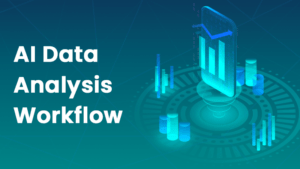
What Trends in Data Integration Should You Watch in 2024?
In 2024, staying ahead of data integration trends is crucial for businesses aiming to leverage their data efficiently. With the rapid advancement of technology, the methods and tools used for data integration are evolving. Understanding these trends can help businesses maintain a competitive edge and ensure their data strategies are future-proof. Here are the top data integration trends to watch in 2024.
Table of Contents
AI and Machine Learning in Data Integration
Artificial Intelligence (AI) and Machine Learning (ML) are revolutionizing data integration by automating complex tasks and enhancing decision-making processes. These technologies help predict and resolve data discrepancies, optimize data flows, and improve overall data quality.
Key Benefits:
- Automation: AI and ML reduce the need for manual intervention, minimizing errors and increasing efficiency.
- Enhanced Insights: These technologies provide deeper analysis and insights, enabling better decision-making.
- Scalability: AI and ML can handle growing data volumes and complexities, making them scalable solutions for businesses of all sizes.
Example:
Consider a retail company that implemented AI-powered data integration tools to streamline its inventory management. The AI system predicted stock shortages and recommended restocking times, resulting in a 20% reduction in stockouts and a 15% increase in sales.
Real-Time Data Processing
Real-time data processing is becoming increasingly important as businesses strive to make faster, data-driven decisions. By integrating data in real-time, organizations can respond to changes and opportunities more swiftly.
Key Benefits:
- Immediate Insights: Real-time processing provides instant access to data, enabling quick decision-making.
- Improved Customer Experience: Businesses can offer personalized services and respond to customer needs more promptly.
- Operational Efficiency: Real-time data integration enhances operational efficiency by reducing delays in data processing.
Example:
A financial services company implemented real-time data integration to monitor transactions and detect fraudulent activities instantly. This approach reduced the response time to potential fraud from hours to seconds, significantly minimizing financial losses.
Cloud-Based Data Integration
The shift to cloud-based data integration continues to grow as more businesses move their operations to the cloud. Cloud integration provides flexibility, scalability, and cost savings, making it an attractive option for modern enterprises.
Key Benefits:
- Scalability: Cloud-based solutions can easily scale to accommodate increasing data volumes and business growth.
- Cost-Effective: Reduces the need for on-premises infrastructure, lowering maintenance and operational costs.
- Accessibility: Enables seamless access to data from anywhere, supporting remote and hybrid work environments.
Example:
A healthcare provider adopted cloud-based data integration to centralize patient records from multiple sources. This integration improved data accessibility for healthcare professionals, leading to better patient care and streamlined operations.
Enhanced Data Security and Governance
With the rise in data breaches and regulatory requirements, data security and governance have become top priorities for businesses. Modern data integration solutions are incorporating advanced security measures to protect sensitive information and ensure compliance with regulations.
Key Benefits:
- Data Protection: Enhanced security measures protect against data breaches and unauthorized access.
- Regulatory Compliance: Helps businesses comply with data privacy regulations such as GDPR and CCPA.
- Data Integrity: Ensures the accuracy and reliability of data through stringent governance practices.
Example:
A financial institution implemented a data integration solution with built-in security and governance features. This approach ensured that all customer data was encrypted and access was tightly controlled, resulting in zero data breaches over the past year.
No-Code/Low-Code Platforms
No-code and low-code platforms are gaining popularity as they allow users to create and manage data integration processes without extensive coding knowledge. These platforms democratize data integration, enabling business users to contribute to data initiatives.
Key Benefits:
- Ease of Use: Simplifies the data integration process, making it accessible to non-technical users.
- Faster Development: Accelerates the creation and deployment of data integration workflows.
- Cost Savings: Reduces the reliance on specialized IT resources, lowering development costs.
Example:
A marketing firm adopted a no-code data integration platform to consolidate marketing data from various sources. The platform enabled marketing analysts to create data workflows without needing IT support, leading to faster campaign execution and improved data-driven strategies.
Conclusion
As we move into 2024, staying updated with the latest data integration trends is essential for businesses looking to harness the full potential of their data. At Qmantic, we are committed to helping you navigate these trends and achieve your data integration goals.
By understanding and implementing these trends, businesses can maintain a competitive edge, ensure data accuracy, and drive better decision-making in 2024 and beyond.





